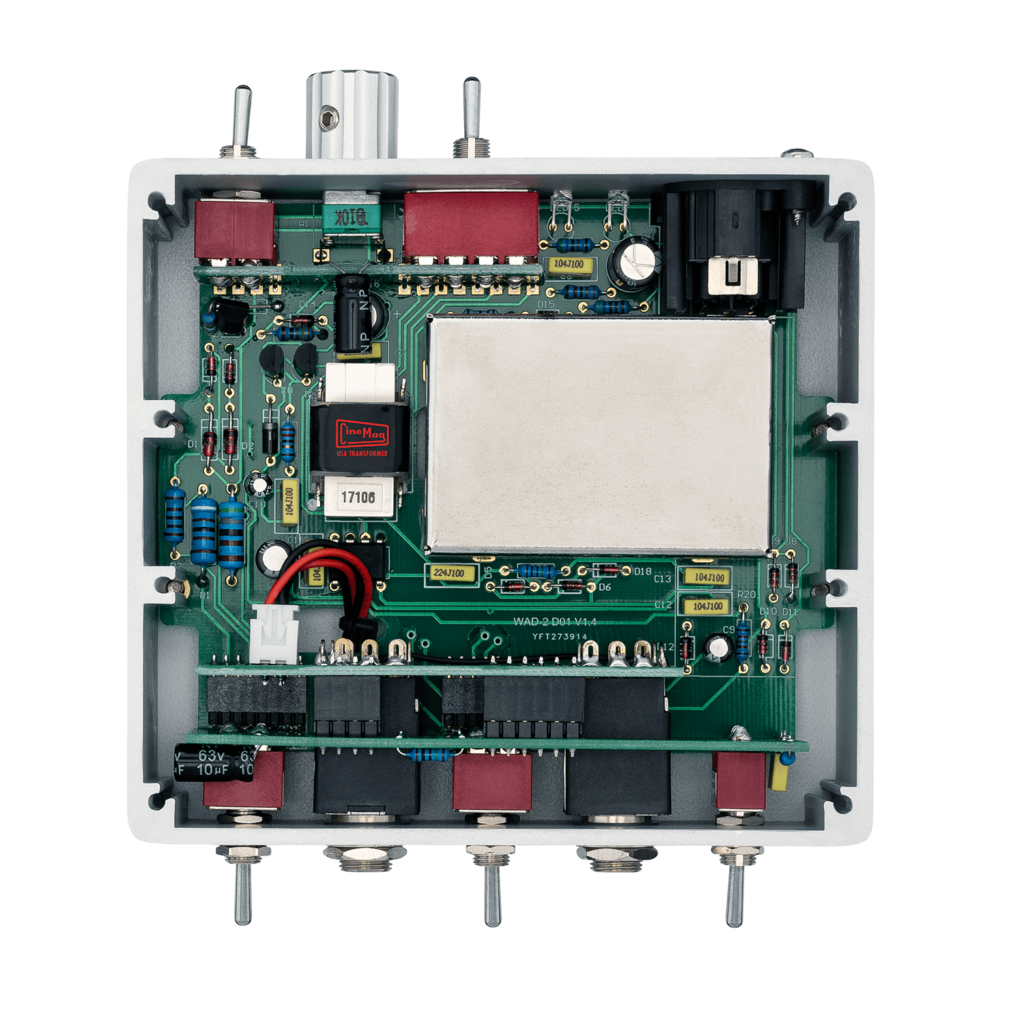We have had a lot of experience with Warm Audio products, from their preamps to their microphones, and they have been excellent values. Now they’re at it again, with a set of active and passive DI Boxes that deliver the goods.
OK, first things first, what’s the difference between active and passive DI boxes? Good question. Here’s an example: let’s say you’re running a bass guitar with active pickups, the passive version would be the best to pair it with. How about an acoustic guitar that has a pickup but no preamp? In this case the active version is the one to go with. If the device has power, the DI doesn’t need any on its own.
Each unit has the usual 1/4” input and thru connection points, phase reversal and ground lift selectors plus a variable pad is selectable. The pad has a range of -30dB to -3db. The active version requires power, which can be provided internally by two 9v batteries, or by phantom power. The active version can be run in passive mode, for greater flexibility. Looking under their respective hoods, the build quality is excellent. The only minor quibble is the mini toggles are a bit proud, and stick out past the edges. If the exterior casing was a bit longer, or the toggle switches were shorter, that would be a bit better, and less chance for the switches to get damaged or broken. But in real-world practice, this shouldn’t be much of an issue.
When doing ANY direct recording with guitars, a DI makes a big difference, especially when going into a DAW, running into an amp sim plug-in for example. Using the active unit was perfect in getting healthy and clean sounding levels into our DAW via our interface. The pad got the signal to a great output level, without any noise or coloring at all. Our test bass guitar was a simple passive Yamaha BB 404, and again, we got excellent (and ultra clean) results. It’s transparent, and just brings a better balanced signal into the picture. The adjustable pad is quite helpful, with a tunable range, not just an “add specific DB here” that might not be enough, or worse, could be too much.

To give the passive one a workout, we connected it to the speaker/recording out of our BOSS Katana guitar amp, and ran the DI into our interface, in the “amp out” mode. Again, the clarity was perfection. No need to add in EQ to fix any issues. With so many amps and amp simulator devices out there, they may have outputs to go right into a mixer, but not all of them have XLR outs. The DI box gives the opportunity to get a cleaner, balanced signal, as well as eliminate ground hum and phasing issues. Trust us, these are all good things. And at this price, these Warm boxes are pretty much no brainers.
Overall for the money, the active version offers the best flexibility, with a selective active or passive mode. Studio owners that might need those options, add this to next year’s budget. The passive version might be best for guitar players using them in a live setting, post amp. Regardless, they’re both professional level DI boxes, at a smart price, that bring out more of what’s already going on, without any additional tone coloring.
PROS:
Active model can be passive or active. Pad is very useful. Reasonably priced.
CONS:
None
STREET PRICE(S)
- Active DI box: $199
- Passive DI Box: $149
